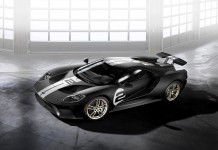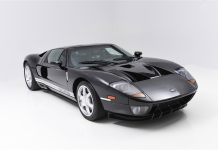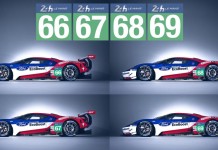Two Ford Fiestas will leave the University of Michigan in Ann Arbor on May 13, and though the cars may be separate, they will be linked to each other and to the entire global community in ways that mark a new era in mobile connectivity.
Embarking upon a week-long road trip to Maker Faire, Silicon Valley’s annual ideas festival, the Fiestas and their occupants will be serving as messengers from Ford announcing the arrival of the car as a technology platform.
The car is the ultimate mobile device,” claims Venkatesh Prasad, group and technical leader of the Infotronics team in Ford Research & Advanced Engineering. “Ford has led the convergence of the auto and consumer electronics industries, and now we’re researching how to responsibly and safely harness the Internet to enhance drivers’ time behind the wheel.”
In one Fiesta, the team from Ford Research & Advanced Engineering (R&AE) and IT – T.J. Giuli, Joe Rork, Joe Ross and Tom Alexander – will be demonstrating three experimental apps, known as Virtual Road Rally, “Auto”matic Blog and Local Search, developed on top of Ford’s application development platform built on Windows 7 and Microsoft Robotics.
In the second Fiesta, U-M computer science students Collin Hockey, John Ciccone, and Joe Phillips and School of Information student Sangmi Park will be using Caravan Track, an app they developed as part of a 12-week course called Cloud Computing in the Commute. Ford initiated the course to challenge students to develop social networking personal transportation apps. Caravan Track was judged the most compelling, out of six creative apps presented at the conclusion of the course, winning the students a trip to California with Ford engineers. (Read more about the U-M student apps here.)
“We believe this is the first time vehicles will be socially connected through the Internet during a cross-country trip,” said Giuli, Ford research engineer. “All the apps – from Caravan Track to the Virtual Road Rally, and particularly the notion of the car automatically posting its mood and location – really explore new boundaries in the use of digital tools to expand social links.”
The road trip will signal the culmination of a yearlong Ford initiative called American Journey 2.0, a joint open innovation research project, supported by Microsoft and Intel, offering a group of U-M students a chance to define the future in-car experience.
About the Ford apps
The Ford team will be using three apps developed within the company’s connected vehicle labs.
- Virtual Road Rally allows users to define points-of-interest (POIs) or physical landmarks, similar to those found in a road rally. The app can take the form of a “treasure hunt,” revealing information about various POIs as drivers reach them.
It can also serve as a competitive drive app, allowing users to post various parameters for a specific drive. For example, a user could post the amount of fuel they used driving from A to B, and challengers would attempt to best that mileage. The app uses a Web-based component to allow users to upload rally points and challenge parameters, as well as post their individual results.
- Road Rally users could also create rallies focusing on their own towns, allowing drivers who may never have visited a particular place to learn more about landmarks and POIs. Such a feature would let drivers share their favorite drives and provide small towns and “off the beaten path” locations a new way to attract visitors to unique places.
“Auto”matic Blog attempts to elevate the car to its rightful standing as an equal member of the team, providing it with a personality and way to communicate its mood. The car itself, dubbed @AJtheFiesta, will automatically blog or tweet statements about the journey based on information it gathers from various vehicle data sensors or engine computer codes.
“For example, if one assumes that a happy car is one that’s zipping along an open road or negotiating tight curves,” explains Giuli, “the powertrain sensors – engine rpm, speed, steering inputs, g-loads, that sort of thing – can indicate to the car that it’s in one of those fun situations, and the car can then indicate that with a tweet or blog post. Similarly, if it’s at zero mph with the wipers on, the car might decide it’s sitting in traffic in the rain and send a sad tweet. Either way, we wanted to allow the car to become a blogger.”
AJ will also be able to indicate via GPS trace the roads on which it’s driving when it feels certain ways, and the system will also allow it to take a photo to show other drivers – and perhaps, someday, other cars – the conditions that trigger its opinions.
- Local Search uses a built-in social media component via the social networking app Foursquare. Each time the vehicle makes a stop, it will check in with Foursquare to identify the location, and it can also search for nearby restaurants, gas stations and parks.









